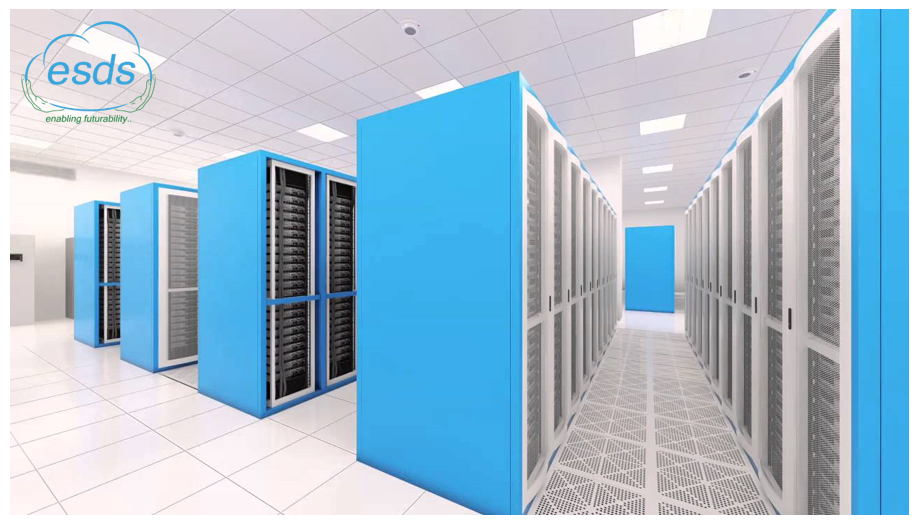Well, clouds sprint on Data Centers!
A Data Center (DC) is a provision used to lodge digital systems like workstations, personal computers and various other correlated units such as storage and network components. A DC normally consists of backup electricity supply, redundant data link connections, ecofriendly environment which includes power-saving systems, proper air conditioning and surveillance devices. Generally, a large DC uses a lot of power, almost as much as a small town and is a conglomeration of multiple IT-equipped elements that include server racks, repository elements, networking devices, switches and firewalls.
Data Centers should also ideally contain sufficient infrastructure such as power distribution and backup of electricity supply system, including UPS, backup generators and much more. A DC should also be properly ventilated and there should be appropriate cooling systems such as ACs where the servers and other workstations are present, and competent provisioning for network carrier and connection.
There is a major difference between a DC and a Cloud. A Cloud basically is an off-premise computing technology that happens to stock data on the web, whereas a DC is an on-premise hardware space including a stack of racks and servers that store data on institution’s local network. Although both types of computer systems can store data; as a physical unit only a data center can store servers and other equipment. DCs are not characterized by their physical size. For instance, major organizations like Oracle, Twitter and technology giants like Google may use a huge amount of space in a DC while small-scale businesses operate well with a limited number of servers and storage capacity connected and enclosed within a convenient room.
What are Data Center tiers?
Tiers are used to define and measure standard uptime of a DC and parameters like the Return On Investment obtained, DC performance and asset monitoring. There are 4 types of tiers as defined by Uptime Institute that created the standard Tier Classification System:
- Tier I: Non-redundant capacity components
- Tier II= Tier I + Redundant capacity components
- Tier III= Tier I + Tier II + Dual-powered equipment and multiple uplinks
- Tier IV= Everything is dual-powered. Tier I + Tier II + Tier III + all components with fully fault-tolerant multiple uplinks, high capacity devices, coolers, HVAC systems, racks, etc.
ESDS Data Center – Tier III
Most Cloud Service Providers experience downtime for many hours and sometimes for more than a day due to failure in electrical systems. ESDS chose to make investment in Uptime Institute Certification which requires redundancy on all levels for non-IT infrastructure. This investment is worth it as it helps deliver best in-class customer services even in catastrophic events. ESDS is a Tier III Datacenters with state-of-the-art facilities and has a very strong cloud platform maintaining 99.99% of Uptime Standard.It has chosen to invest in building a highly secure network and isolation of IT infrastructure to guarantee 100% secure cloud hosting environment for all the customers.
What is a Green DC
Data Centers all over the world use a lot of electricity that is utilized in two stages. Firstly, a lot of power is needed to execute the actual components and secondly, a large amount of power is needed to air condition those components. To cut down the conditioning costs of DCs administrators make sure natural ways are used to cool those equipment. This reduces a lot of cost and makes it an eco-friendly data center.
Facilities in ESDS, the Green Data Center
The austerity of ESDS’ commitment towards eco-conservation can be observed in its infrastructure itself. From carefully selected building materials to unique power-saving systems, it has been ensured that all operations and premises are kept as contributing factors in maintaining the environmental equilibrium.
ESDS Data Center structure has been built using Cellular Lightweight Concrete (CLC) Blocks commonly known as Fly-Ash Bricks. Using CLC Blocks provides better strength to weight-ratio, as they are 1/3rd of the weight of the commonly used bricks and have a higher fire rating. It also provides better acoustic and thermal insulation, creating a temperature difference of up to 4-5 degrees Celsius in comparison to red bricks. Thus the air-conditioning requirement is considerably reduced helping us save on power consumption. The building has a well-planned rainwater harvesting architecture contributing towards ground water table recharging. Clean and filtered rain water is passed into a 200 ft. deep tube well which is filled up with pebbles. A Sewage Treatment Plant (STP) has been set up within the premises ensuring that the sewage water is recycled and used for watering the trees and plants on the ESDS campus.
In areas of power consumption, ‘Project Green Connect‘ is ESDS’ attempt to conserve and recompensate for what has been taken from the eco-system. An effort has been made to integrate the usage of unconventional energy resources in the form of cleaner and greener alternatives and thus, solar-powered illumination systems have been installed within the premises. With Project Green Connect, ESDS strives to help make the company greener, reduce carbon footprints and contribute generously towards Ecological Conservation. Talking about our Data Center Premise, we also house over 30 fully-grown. ESDS has also been conducting Tree Plantation Drives every year in various parts of Northern Maharashtra and plans to plant 5,000 trees next year.
- Small Business Website: Building a Strong Online Presence - March 11, 2025
- Top 10 Best Practices for Implementing DRaaS in 2025 - January 20, 2025
- Signs of Cyber Attack and How to Respond to them? - March 25, 2019
